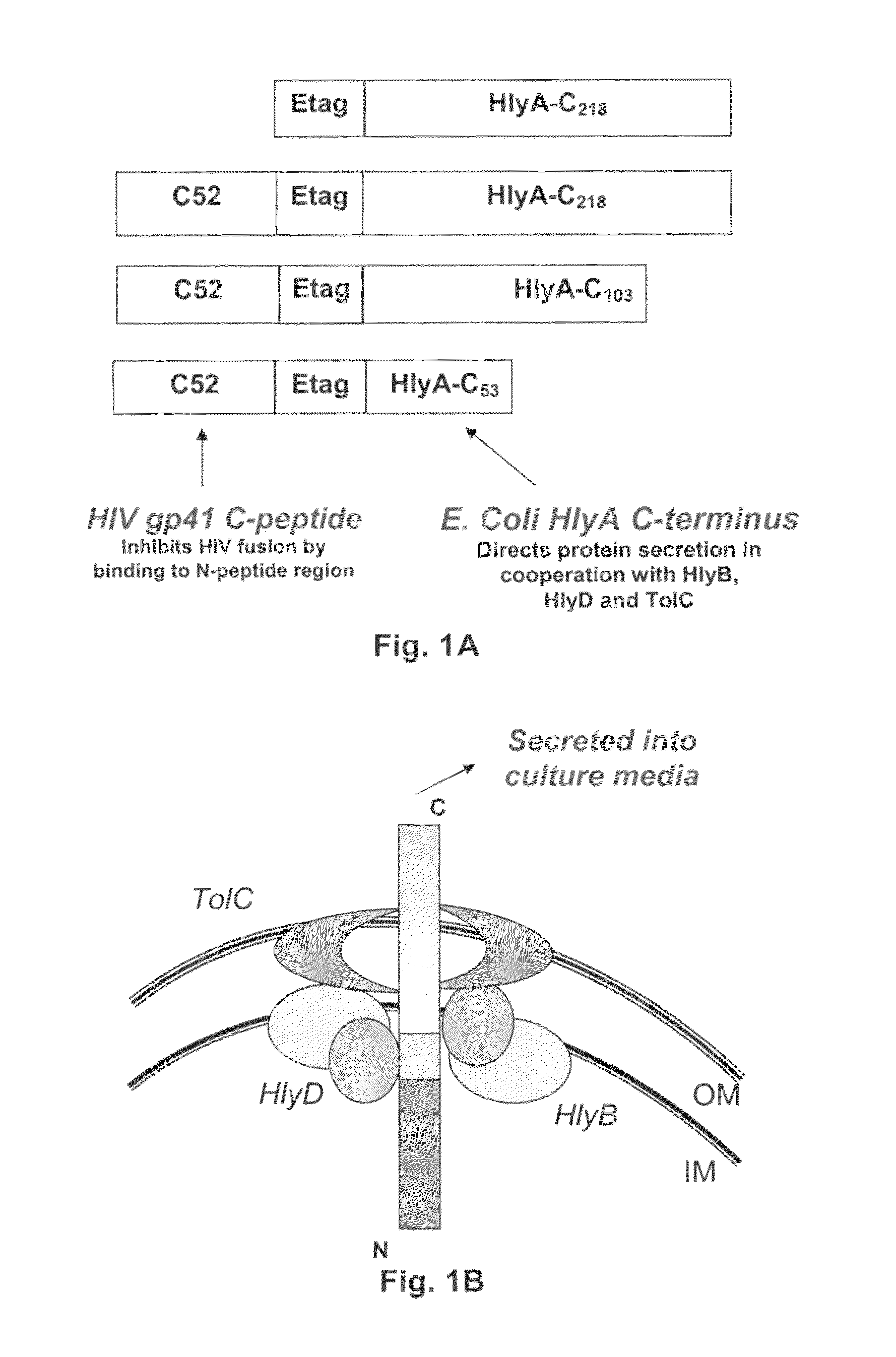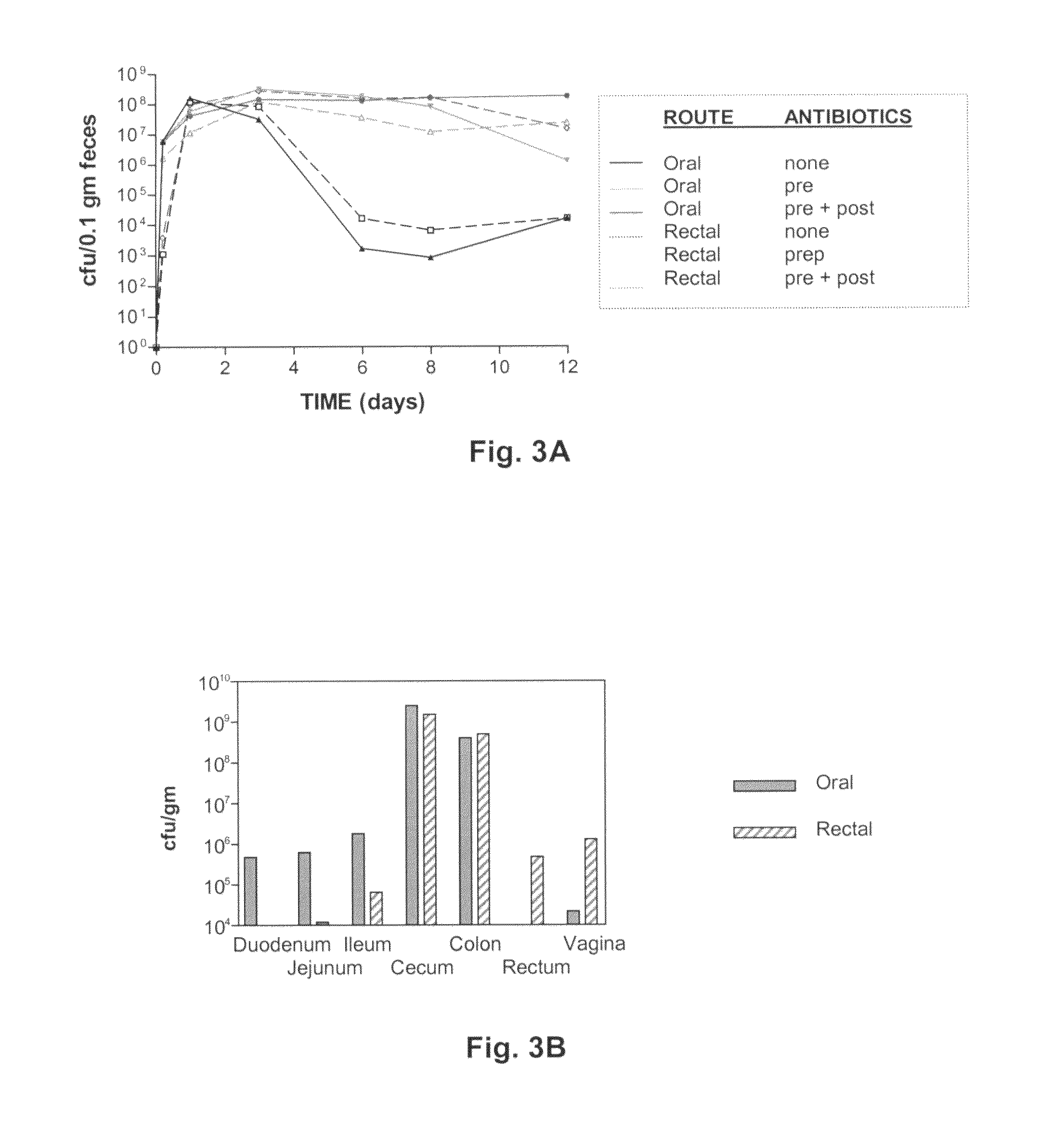Commensal strain of E. coli encoding an HIV GP41 protein
a technology of e. coli and gp41, applied in the field of common bacteria, can solve the problems of no widely available biomedical intervention, no effective vaccine development, and inability to slow the spread of hiv by behavioral measures,
- Summary
- Abstract
- Description
- Claims
- Application Information
AI Technical Summary
Benefits of technology
Problems solved by technology
Method used
Image
Examples
example i
Expression of an Anti-HIV Peptide by a Commensal Strain of E. coli
A. Experimental Design: Choice of Inhibitory Peptide, Secretion System and Bacterial Strain
[0099]The inventors engineered E. coli commensal strain Nissle 1917 to express an HIV fusion inhibitor peptide fused to the carboxy-terminal secretion signal of the hemolysin A gene (hlyA) and showed that the hybrid polypeptide secreted into the culture medium can block HIV infection. Moreover the genetically modified bacteria were capable of colonizing the gastrointestinal tract and the vagina of an experimental animal, the mouse.
[0100]As an HIV blocker, a 52 amino acid peptide comprising 47 amino acids from the C-terminal region of gp41 and 5 amino acids added to allow cloning into the expression vector—C52—was chosen. For a further description of C52, see Root et al. (2003) Proc Natl Acad Sci USA 100, 5016-5021 and discussions elsewhere herein. The C52 peptide coding sequences were cloned into a high copy number, ampicillin-...
example ii
Efficacy Tests, Using Rhesus Macaques
A. Experimental Design: Choice of Bacteria, Test Animals, and Challenge Virus.
[0124]The inventor used macaques to demonstrate that a commensal strain of E. coli expressing an HIV fusion inhibitor peptide can colonize the gastrointestinal tract of a primate and that the genetically modified bacteria inhibit infection by an HIV-SIV hybrid virus. The bacteria used for this experiment were E. coli Nissle 1917 expressing C52-HlyA hybrid peptides because the previous data showed that these organisms can secrete high levels of biologically active peptide and can efficiently colonize mucosal surfaces of the gastrointestinal tract (see,l e.g., Example I). The test animals were rhesus macaque of Chinese origin, which were selected because they are a well-studied nonhuman primate model for immunodeficiency virus infection and pathogenesis. The challenge virus was SHIV162p3, an HIV-SIV hybrid virus. This strain was chosen because (i) it uses the same envelop...
PUM
| Property | Measurement | Unit |
|---|---|---|
| Fraction | aaaaa | aaaaa |
| Antimicrobial properties | aaaaa | aaaaa |
| Strain point | aaaaa | aaaaa |
Abstract
Description
Claims
Application Information
 Login to View More
Login to View More - R&D
- Intellectual Property
- Life Sciences
- Materials
- Tech Scout
- Unparalleled Data Quality
- Higher Quality Content
- 60% Fewer Hallucinations
Browse by: Latest US Patents, China's latest patents, Technical Efficacy Thesaurus, Application Domain, Technology Topic, Popular Technical Reports.
© 2025 PatSnap. All rights reserved.Legal|Privacy policy|Modern Slavery Act Transparency Statement|Sitemap|About US| Contact US: help@patsnap.com



